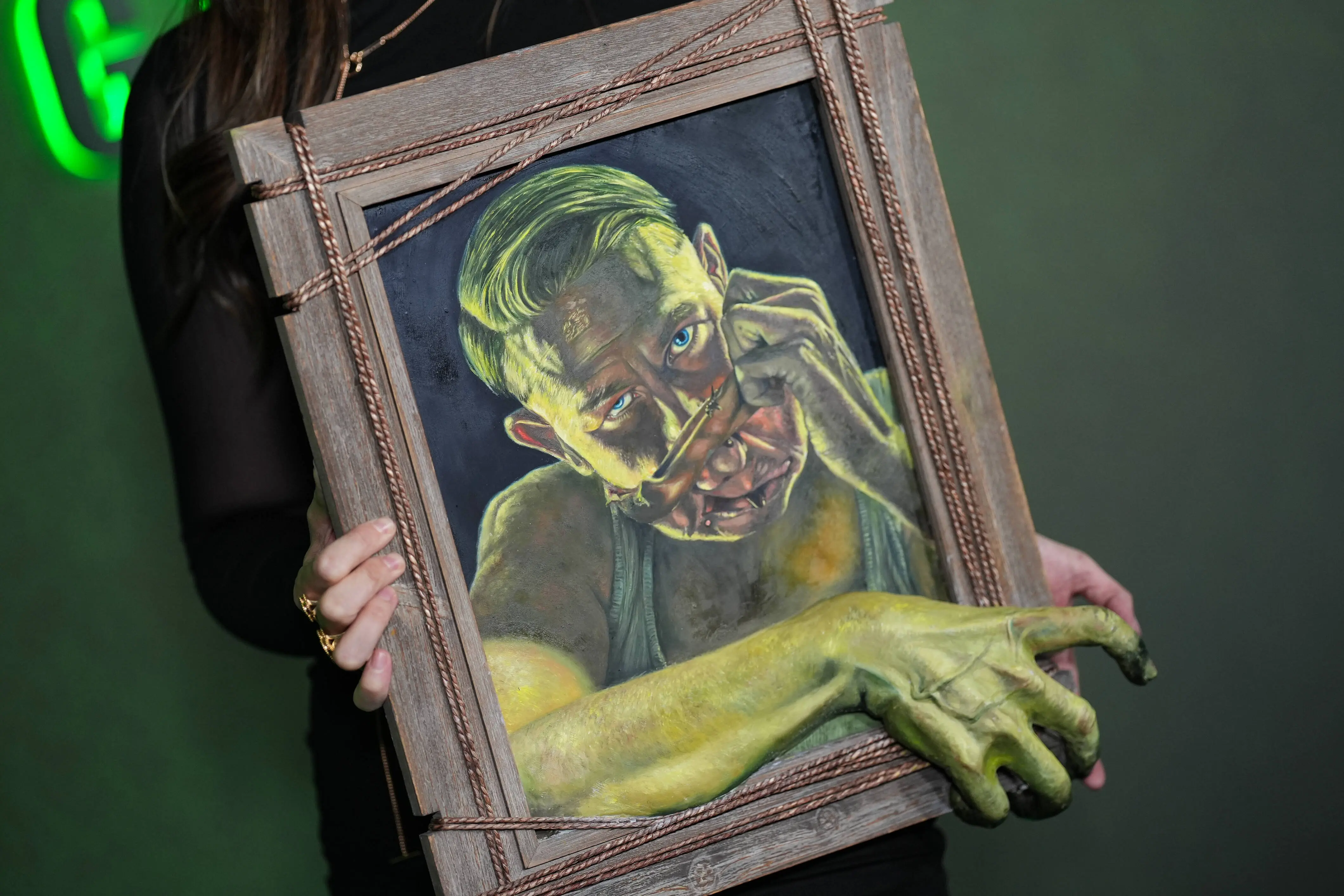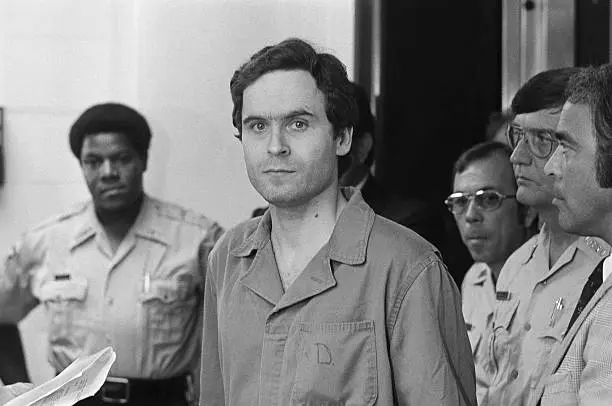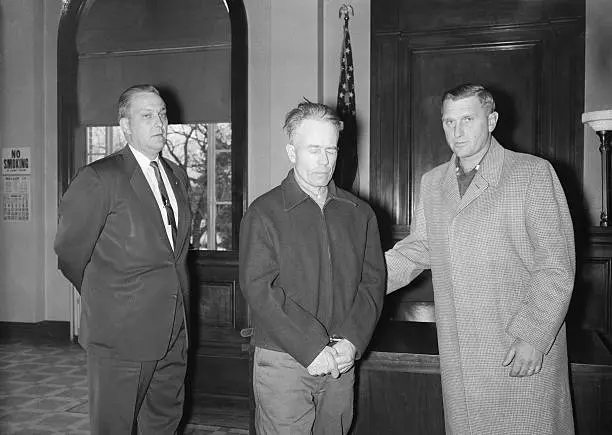Fact Check: Did Netflix’s Monster get Ed Gein’s Ted Bundy story right?
-
 NEW YORK, NEW YORK - SEPTEMBER 30: "Monster: The Ed Gein Story" artwork during Netflix's "Monster: The Ed Gein Story" New York premiere at The Plaza Hotel on September 30, 2025 in New York City. (Photo by John Nacion/WireImage)
NEW YORK, NEW YORK - SEPTEMBER 30: "Monster: The Ed Gein Story" artwork during Netflix's "Monster: The Ed Gein Story" New York premiere at The Plaza Hotel on September 30, 2025 in New York City. (Photo by John Nacion/WireImage)Monster: The Ed Gein Story, which premiered on Netflix on October 3, is the third chapter in Ryan Murphy and Ian Brennan’s anthology series about America’s most notorious killers. After The Jeffrey Dahmer Story and The Lyle and Erik Menendez Story, this eight-episode season stars Charlie Hunnam as Ed Gein, the Wisconsin murderer and body snatcher whose horrendous life in the 1950s inspired horror film characters like Norman Bates from Psycho and Leatherface from The Texas Chainsaw Massacre.
Fact Check: Did Netflix’s Monster get Ed Gein’s Ted Bundy story right? The answer is No. The show’s boldest narrative leap suggests Gein, while confined in a psychiatric hospital, aided the FBI in capturing Ted Bundy, the prolific 1970s serial killer. It’s a haunting premise, but pure fiction. A dramatic conceit to explore what a tortured soul Gein was and his impact on true crime culture, without any possibility of having been involved in Bundy's capture.
Netflix's fictional arc: Debunking the Ted Bundy connection
Monster’s fictional narrative places Gein in Central State Hospital in the 1970s, where he purportedly helps FBI profilers Douglas and Ressler understand Ted Bundy’s methods. The show depicts Gein detailing Bundy’s use of a VW Beetle for quick getaways, his fake arm cast to lure victims, and even his use of a hacksaw to dismember bodies.
A letter from another killer, Richard Speck, supposedly mentions “Ted,” revealing Bundy’s name, car, and plans for sorority house murders. Nurses encourage Gein’s belief that he influenced Bundy’s 1978 Florida arrest, framing it as his “new purpose" in episode 8, The Godfather.
In reality, no connection is established between Ed Gein and Ted Bundy. Active from 1974 to 1978, Bundy killed more than 30 women across many states. His first arrest was in 1975 during a traffic stop in Utah, where the police discovered handcuffs and other incriminating items in his VW Beetle. After two escapes, he was recaptured in Florida in 1978, driving a stolen vehicle.

Bundy’s confessions on death row were self-initiated, not prompted by Gein. While Bundy may have read about Gein, as many did through media coverage, no evidence suggests Gein knew of Bundy or influenced his capture. Monster’s plot is a dramatic fabrication, using Gein’s schizophrenia to craft a delusion-fueled narrative that ties two eras of crime.
The fictional parts of the show rely heavily on the culture created by Gein, and Psycho and The Silence of the Lambs lead the reference to Gein, showing how his crimes would shape elements of horror.
The truth about Ed Gein’s crimes and confinement
Ed Gein's crimes horrified America in the 1950s. He was arrested in 1957 for the murder of Bernice Worden, who owned a hardware store in Plainfield, Wisconsin. His confession of killing a bar owner, Mary Hogan, predated this instance in 1954. When police searched his home, they discovered alarming displays constructed from human skin and bones, which Gein had fashioned into masks, clothing and furniture.
Gein was found insane and admitted into Mendota State Hospital and later transferred to Central State Hospital for the Criminally Insane. He lived a quiet life, helping with chores, playing cards, and showing no interest in violence until his death from respiratory failure in 1984 at the age of 77.

The FBI's Behavioral Analysis Unit (BAU) was established in the 1970s, and no consultation was conducted with Gein. John Douglas and Robert Ressler, whose work inspired Mindhunter, were two of the first profilers to interview mass and serial murderers. They studied aspects such as motivations, details, and thought processes related to crime.
While Douglas observed Gein, he deemed him too unwell or too socially withdrawn to have any meaningful conversations with him. Gein had schizophrenia and reclusive qualities, which made him an unlikely candidate for engagement with FBI officials. Gein's legacy is found in a contribution to horror fiction, and not in any legitimate law enforcement work.
All eight episodes of Monster: The Ed Gein Story are available exclusively on Netflix.
Stay tuned for more such updates!
TOPICS: Monster: The Ed Gein Story, Ed Gein, Ted Bundy
- Did Richard Speck have breast surgery as shown in the Netflix's Monster: The Ed Gein Story?
- Is Addison Rae in Ed Gein's story? Everything to know about her character
- What Netflix’s Monster didn’t get right — 8 facts the series twisted about Ed Gein’s real story
- Did Ed Gein have any contact with Birdman in real life? Truth behind the character from Netflix's Monster, explained